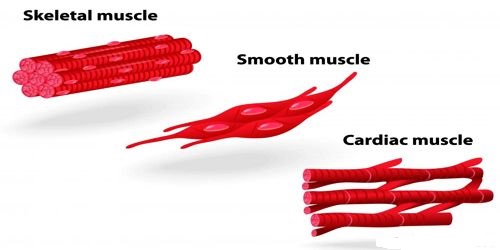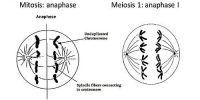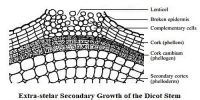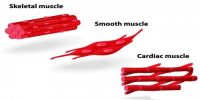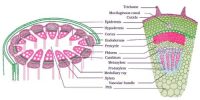Involuntary or Smooth Muscle:
Structural Characteristics: The contraction and expansion of this muscle tissue are not at all of the living beings. This muscle tissue is spindle-shaped. Transverse striations are not present here. That is why this muscle is called smooth muscle. Smooth muscle fibers are small and tapered – with the ends reducing in size, in contrast to the cylindrical shape of the skeletal muscle. Each smooth muscle fiber has a single centrally located nucleus.
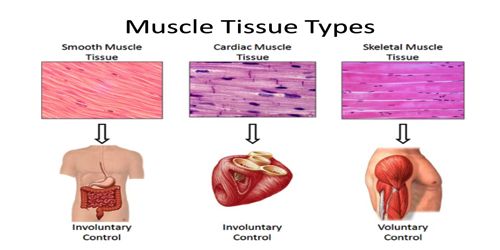
Location: Involuntary muscles are found on the walls of blood vessels, alimentary canal etc. of the vertebrate animals.
Function: Involuntary muscles mainly take part in the movement of internal organs, e.g. peristalsis of the intestine. Contractions of smooth muscle constrict (i.e. narrow = reduce the diameter of) the vessels they surround. This is particularly important in the digestive system in which the action of smooth muscle helps to move food along the gastrointestinal tract as well as breaking the food down further. Smooth muscle also contributes to moving fluids through the body and to the elimination of indigestible matter from the gastrointestinal system.
